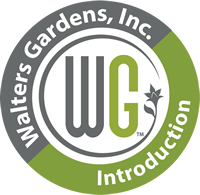Hibiscus 'Spinderella' PP33309 CPBRAF
SUMMERIFIC® Collection


Common Name: Rose Mallow
Show this off in your late summer landscape with the wild new pinwheel pattern of 'Spinderella'. Large, 8" white flowers have medium pink accented edges and a dark red eye. Dark green leaves form a tidy, dense, and well-rounded habit that will fit perfectly as the centerpiece of your garden. The impeccable habit is a great improvement over other varieties of this flower type.
These North American native plants bring massive, tropical-looking flowers all the way to zone 4. Although later to emerge than most perennials in spring, these are fast growing plants capable of adding an inch of new growth a day. Excellent at brightening up end of season gardens.
The SUMMERIFIC® trademark is owned by Walters Gardens, Inc
72ct Plug Tray |
Grade #1 Bare Root |































